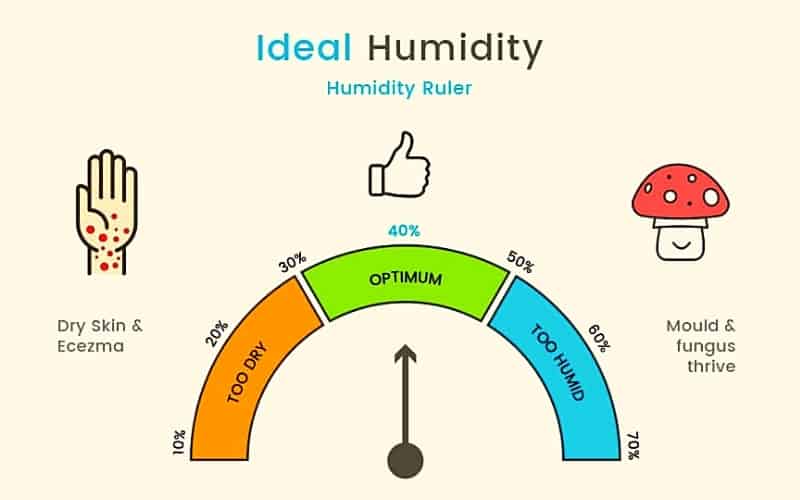
What Is Proper Humidity For Your House and Why? HVAC BOSS
The ideal humidity level in your bedroom is between 30%-50%. Anything exceeding 60% will start to affect your sleep quality. Let's dive in as we explain further! Ideal Bedroom Humidity Levels The temperature in your bedroom is also a vital factor that can impact your sleep.
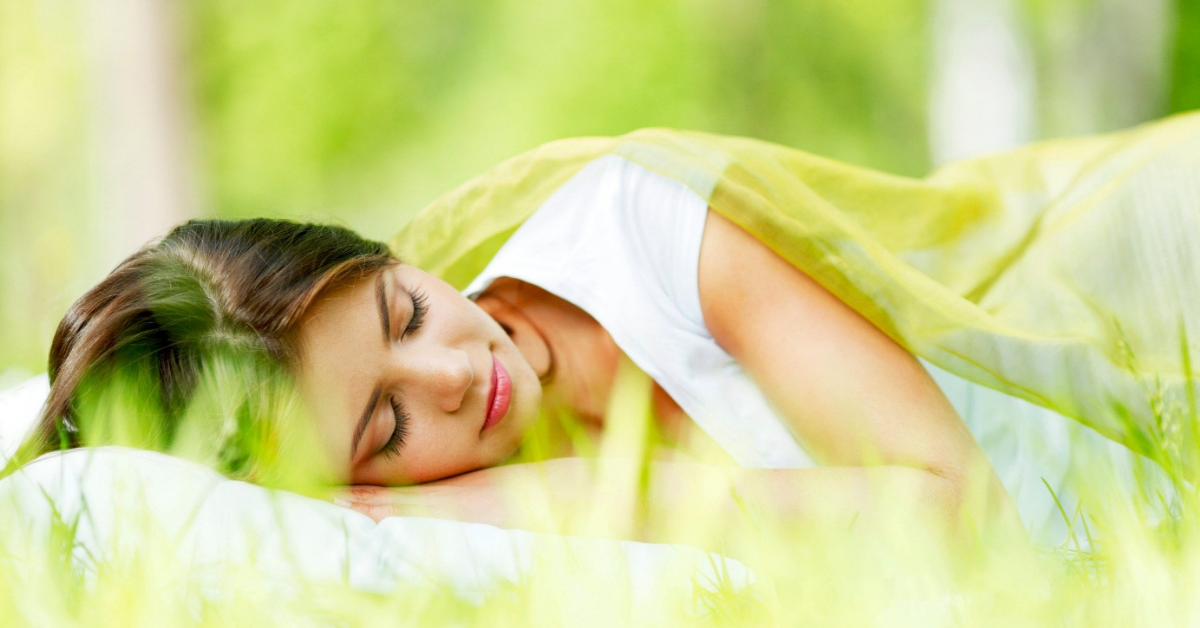
What is The Best Humidity Level for Sleeping?
Turn on the Philips Air Purifier Series 3000i before you head to bed, and in just six minutes it'll remove up to 99.9% of pollutants, allergens, and viruses, helping to clean the air in your sleep sanctuary.

Best Humidity Levels For Sleeping In Winter » 2023
According to the Environmental Protection Agency, the best indoor relative humidity falls between 30% and 50%, and it should never exceed 60%. Other studies suggest 40% to 60% is a better range. Regardless, 60% seems to be the agreed-upon threshold for indoor humidity.

How to Dehumidify a Room..Without a Dehumidifier
2. Is there a universal sleep humidity level? While 40% to 60% humidity is recommended, your ideal level depends on factors like age, health, and climate. Like a tailored suit, personalized humidity suits you best. 3. How can I DIY measure humidity accurately?
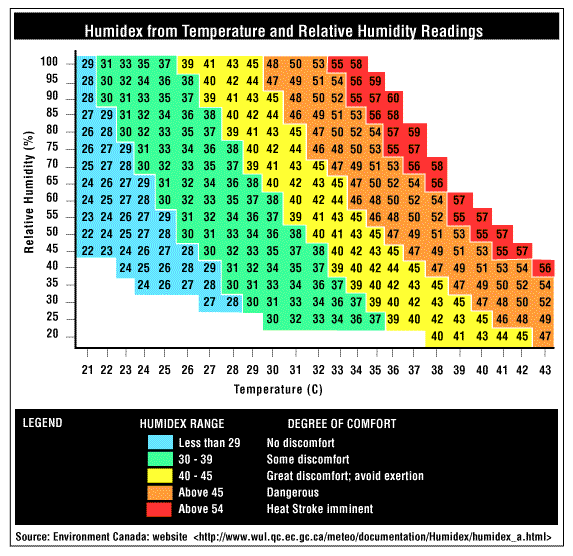
Air conditioner or a dehumidifier to help me sleep? Danby
Selection of furniture, décor, storage items and kitchen accessories. Buy now!
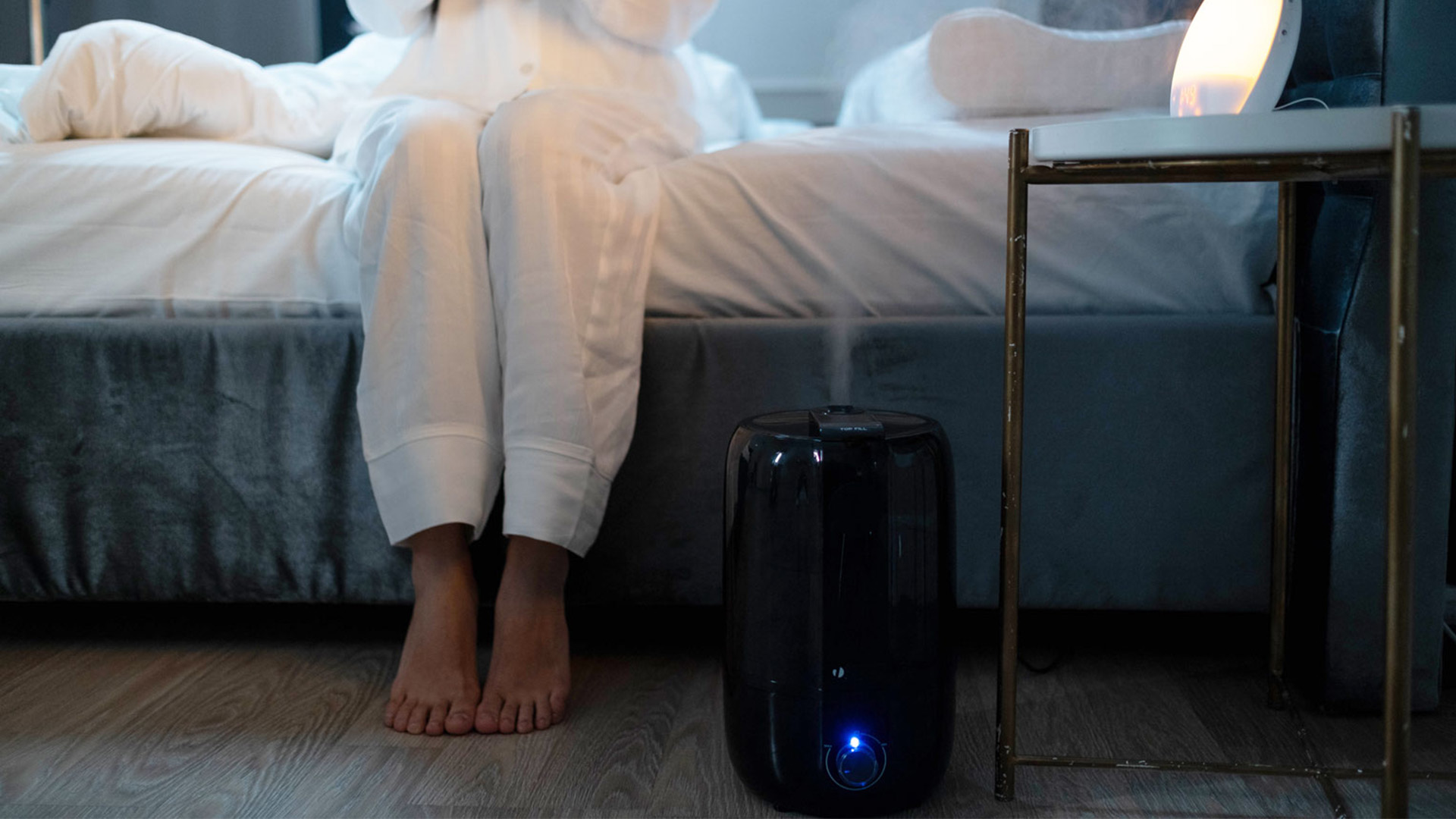
Here's The Definitive Best Humidity Level For Sleeping Sleepopolis
The Ideal Humidity for Sleep.. While the ideal humidity level for a bedroom environment might be different depending on who you ask, the Environmental Protection Agency firmly states that the ideal indoor humidity should be between 30% to 50%—and should never exceed 60%. If the humidity levels surpass that peak percentage (or drops below.
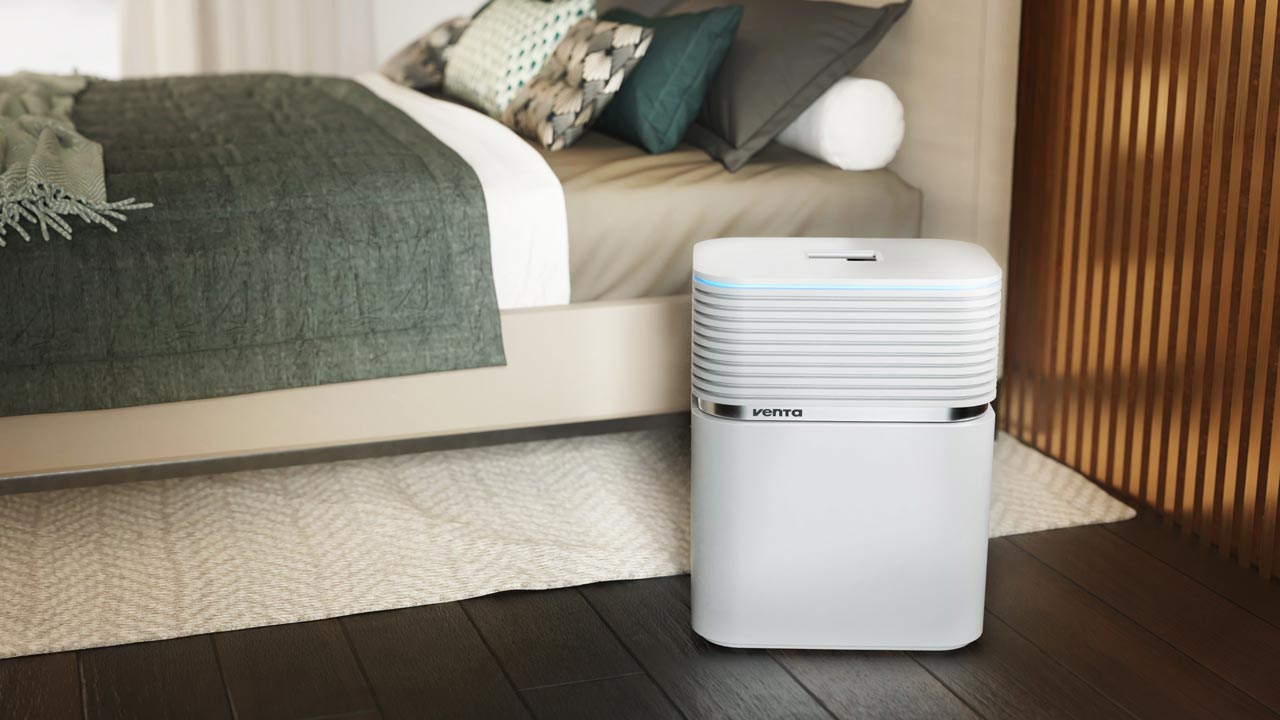
Achieving Optimal Comfort Best Humidity Level for Bedroom Archute
Do you ever wake up and notice you're sweating more than usual? There are several reasons why your bedding is damp in the morning, and the relative humidity in your bedroom could be to blame. The best humidity level for sleeping is between 40% and 60%. When you're in this

What Should The Humidity Level Be In My Home Powell Turner Heating Cooling Linthi Maryland
The Ideal Humidity for Sleep: What Science Says. The range of humidity ideal for maintaining sleep quality falls between 30% and 60%. The recommended indoor humidity range, according to the Environmental Protection Agency (EPA), is 30-50%. It should not go beyond 60%, as it can adversely affect sleep quality.

What Is the Best Humidity Level
Hence, people today buy hygrometers to check the humidity levels at home, humidifiers, and dehumidifiers. Best Humidity for Sleeping. Doctors recommend a relative of 40 to 60 percent humidity within the bedroom for comfortable sleeping. On the one hand, humidity below 40 will make the room colder and dryer than it should be at the current.
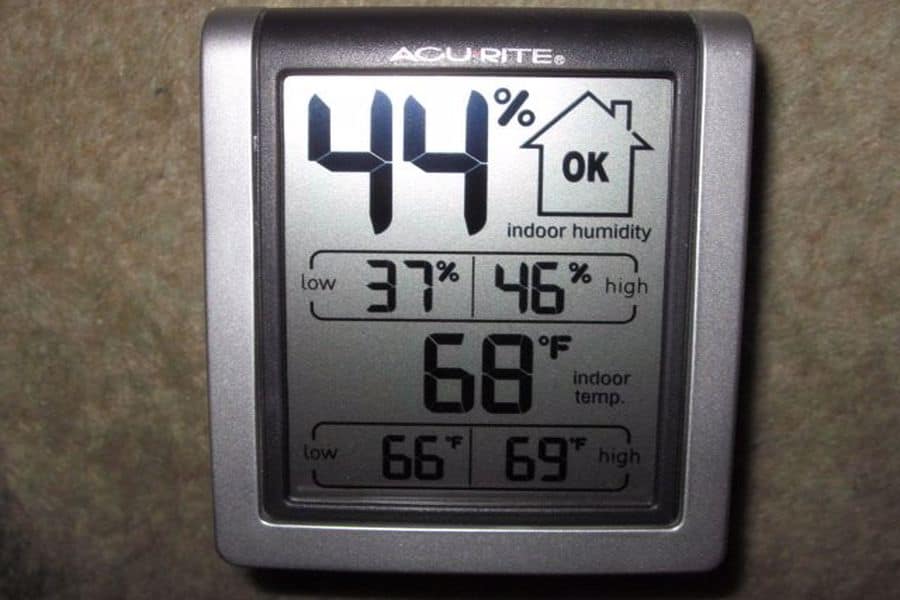
Moisture in the Home Best Humidity Level For Your Home!
The ideal humidity level for sleep is between 40-50%. At this humidity level, the air is neither too dry nor too humid, providing the optimal conditions for sleep. Dry air can cause nasal congestion, dry throat, and dry skin, which can all disrupt sleep. On the other hand, excessively humid air can lead to the growth of mold and dust mites.

What Is the Best Humidity for Sleep? Casper Blog
What Is the Best Humidity Level for Sleep? According to experts, the best humidity level for inside a house and bedroom is between 30% and 50% . Low humidity can cause discomfort by drying out the eyes, skin, and mucus membranes.
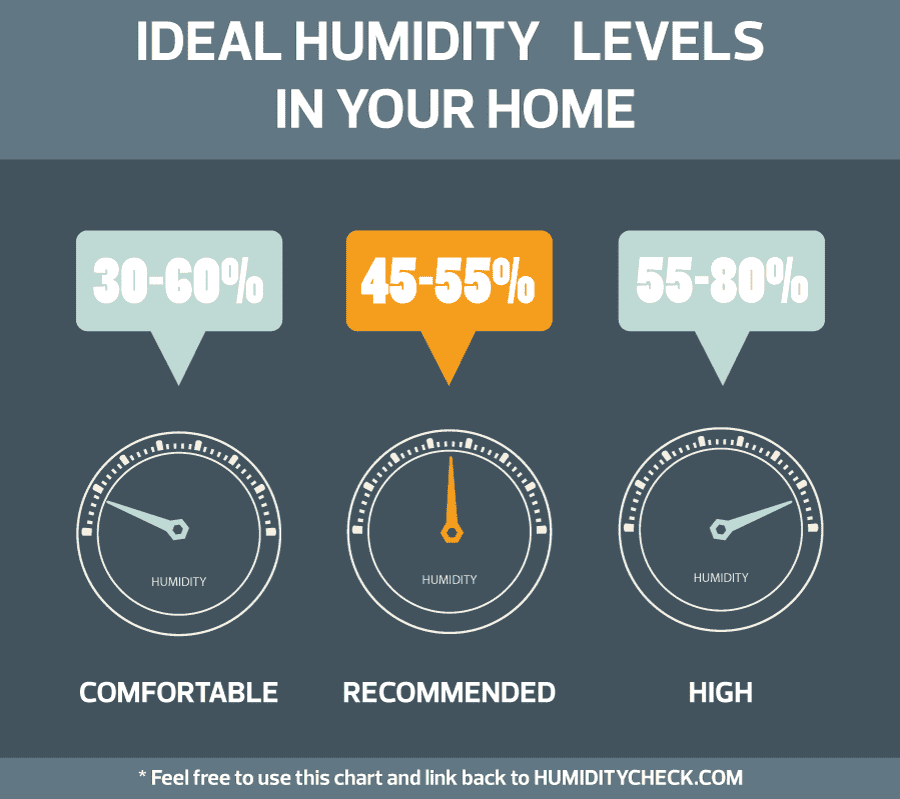
? What Should Indoor Humidity Be? •
A study in Indoor Air, the international Journal of Indoor Environment and Health, found that improving indoor air quality, which includes appropriate humidity levels, leads to better quality sleep. Humidity recommendations vary widely; most are between 30% and 60%, with 30-45% as ideal. But the ideal humidity level varies and is individual.
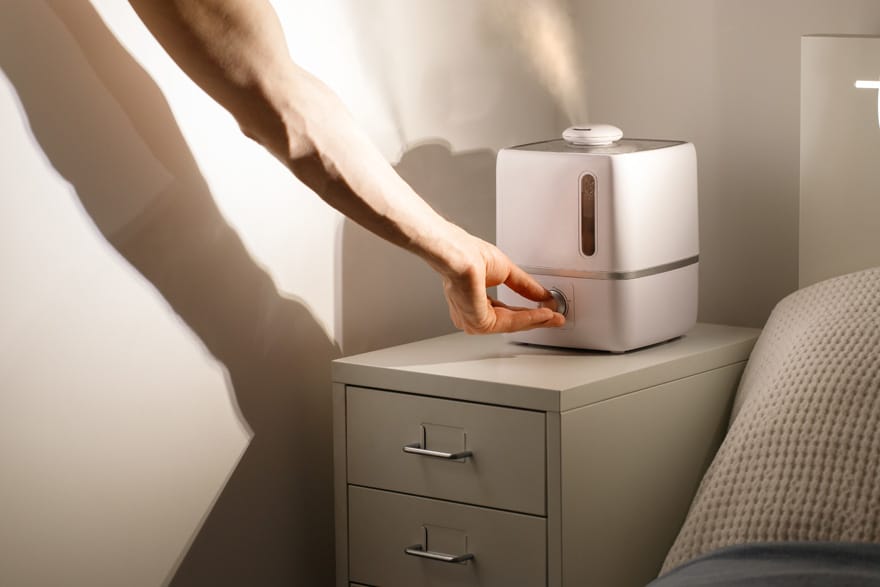
What Is the Ideal Humidity Level for Sleeping? Weather Station Advisor
Signs and Symptoms of a Humid Environment A damp feeling in the air Musty smell Condensation on windows and surfaces You persistently feel dehydrated An uptick in allergy, asthma, and eczema symptoms Signs and Symptoms of a Dry Environment Sore throat Dried out mucous membranes (eyes, nose, throat) Increased static electricity

Temperatures and Humidity Levels That Promote Restful Sleep Are Ideal Updated 2023
1 Maintain a humidity level between 30% and 50%. 2 Add moisture to a space by turning down the thermostat and using a humidifier. 3 Open windows, air conditioners, and dehumidifiers can help dry the air if humidity is high. 4 Bedding that absorbs moisture can help keep you comfortable.

What Is the Best Humidity for Sleep? Casper Blog
The ideal humidity for sleeping is between 30% to 50%, according to the National Sleep Foundation. Table of Contents What Happens If Your Bedroom Is Too Humid? During the summer, the warm air retains more moisture and therefore, relative humidity increases.

What Is the Best Humidity for Sleep? Casper Blog
Is it Better to Sleep in a Humid or Dry Room? How to Optimize Bedroom Humidity 1. Choose the right bedding 2. Use a Humidifier or Dehumidifier 3. Consider Your Plants 4. Use a Mattress Protector 5. Adjust Your Heating and Cooling Perfect Your Sleep Atmosphere with Casper